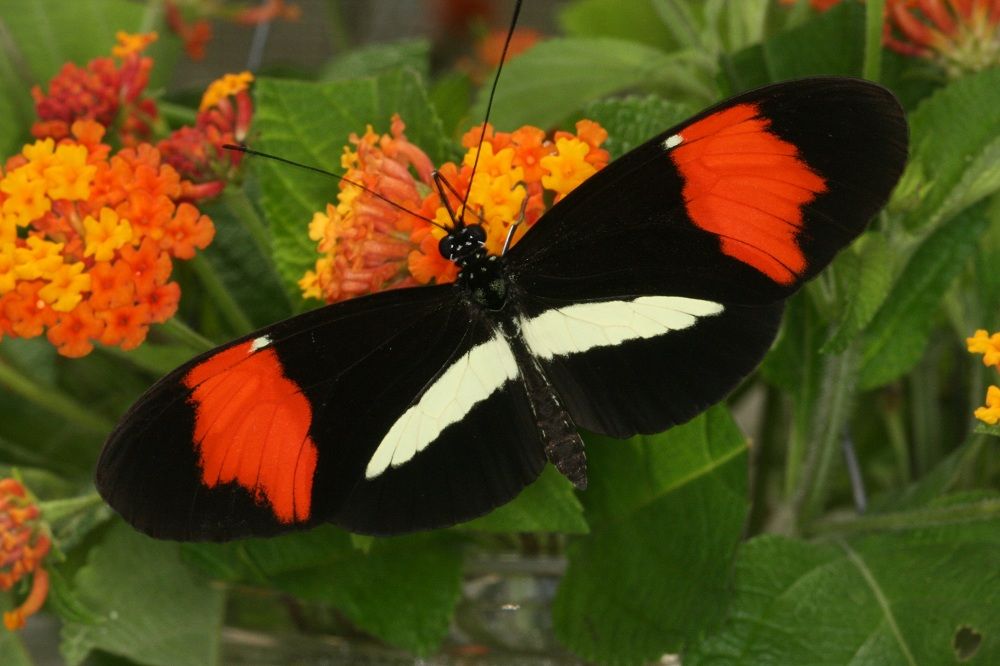Wild Butterflies Crossbreed to Share Colors & Survive

The flashy wing colors of butterflies are spread through species crossbreeding, as are genes devoted to smell and taste, a new genetic analysis of butterflies of the genus Heliconius suggests. The crossbred butterflies seem to survive better in the wild.
"What we show is that one butterfly species can gain its protective color pattern genes ready-made from a different species by interbreeding with it — a much faster process than having to evolve one's color patterns from scratch," study researcher Kanchon Dasmahapatra, of University College London in the United Kingdom, said in a statement.
The researchers, who published their study today, May 16, in the journal Nature, first sequenced the genome of the Postman butterfly (Heliconius melpomene), a well-known species whose caterpillars feast on passion fruit vines in the Peruvian Amazon. They then examined the genetic makeup of two closely related species — Heliconius timareta and Heliconius elevatus —which have similar color patterns on their wings.

The researchers found that these species all look similar because they share the parts of their genomes that deal with color patterns. These species seem to be interbreeding and sharing their genes between species, a behavior once thought to be rare in the wild and seen by scientsits as an evolutionary dead end.
These wing colors are pretty important: Daytime butterflies use them to attract mates and fend off predators.
On the other hand, night-flying moths spend their energy sniffing out potential mates' pheromones. Thus, researchers predicted that because they're such visual creatures, the butterflies would not be able to smell or taste very well.
Actually, when they examined the genome, researchers found that the butterfly species have sophisticated and shared genes that let them smell and taste well. Their delicate antennae contain smell receptors, she explained, and the butterflies' tiny feet hold taste buds.
Sign up for the Live Science daily newsletter now
Get the world’s most fascinating discoveries delivered straight to your inbox.
"We learned that they have a rich repertoire of genes for olfaction [smell] and chemosensation [in this case taste]," study researcher Adriana Briscoe, of the University of California, Irvine, said in a statement.
"This project really changes how we think about adaptation in general," study researcher Marcus Kronforst, of Harvard University, said in a statement. "Evolutionary biologists often wonder whether different species use the same genes to generate similar traits, like the mimetic wing patterns of Heliconius butterflies. This study shows us that sometimes different species not only use the same genes, but the exact same stretches of DNA, which they pass around by hybridization."











